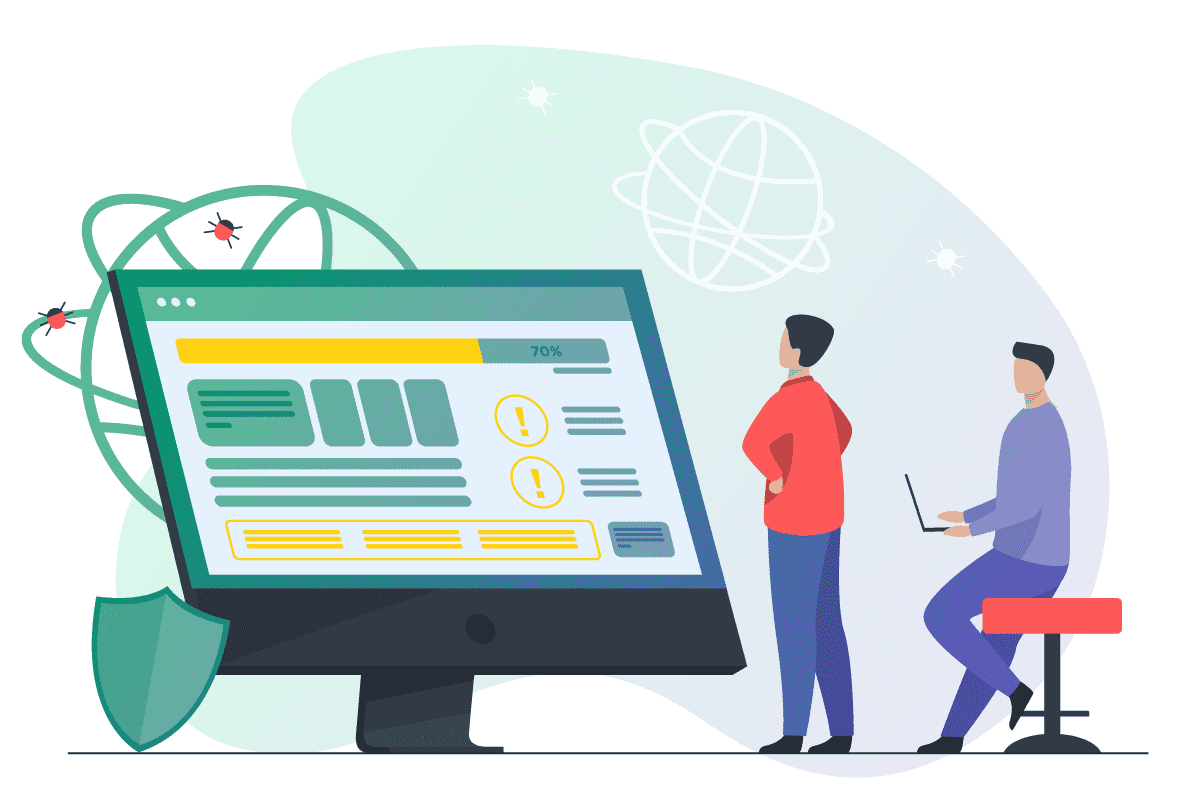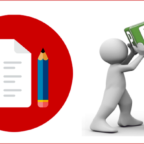Last updated on October 27th, 2023 at 05:58 am
To begin testing early and frequently, take a shift-left method.
Using a powerful programming framework, we’ve already outlined a test-driven development approach. Testing should be done earlier in the development process rather than at the end, according to a shift-left testing technique based on this principle.
- Consider your testing plan early on.
There is a risk of creating bottlenecks and slowing down progress by delaying testing procedures until the final week. Plan your testing schedule early in the development phase to catch defects and malfunctions as soon as possible and have them fixed as quickly as feasible.
- Taking a look at the specifications
It is not necessary to transfer all testing back to the beginning of the cycle if you use the shift-left notion Testers can engage customers and other stakeholders with the goal of assessing and analyzing requirements, which is a form of collaboration with stakeholders
- Conducting tests on a regular basis is essential.
A continuous feedback loop enables fast validation and enhancement of the system by conducting smaller tests more frequently.
- Automation of testing.
When possible, use automated tests to speed up the testing process and maximize test coverage. If you’re interested in testing and continuous delivery, keep reading!
- Take measures to avoid problems.
Shifting to the left can help you avoid problems in the first place rather than remedy them once they occur. As an example, testers can work with developers to contribute to the coding process, or they can run tests before the build is completed. Alternatively, testers can participate in meetings, ask questions, and provide quick feedback to help shape development decisions.
- The ability to work together as a team.
Teams that are cross-functional and have a wide range of talents, such as testers and developers, are most suited to use this Agile technique, which is best implemented in cross-functional teams.
On the other hand, the shift-right technique calls for post-production testing of a fully constructed product. Real-world customer input is gathered and used to improve product quality.
Formalize your technical evaluations.
Formal Technical Review (FTR)
Software engineers do a formal technical review (FTR) to identify functional and logical flaws in the early stages. To guarantee that the software being built adheres to the predetermined standards and criteria, an FTR is a gathering of individuals with certain responsibilities.
When your product is fully developed, it is the ideal moment to conduct an FTR. It all depends on the type of evaluation you’re conducting. If you want to put together an FTR, you’re going to need a team comprised of engineers that are experts in their respective fields. The following questions should be addressed in a meeting wrap-up report after each meeting:
- What were the findings?
- Who did the review?
- What were the findings and conclusions?
The FTR is a sort of review that encompasses the following categories of reviews:
During a formal review or review meeting, the product’s author gives a presentation. The primary goal is to introduce the product to the other reviewers. As a result, all partners must accept the product, propose improvements, and agree on a timetable for its completion.
Walkthroughs are meetings where reviewers evaluate the source code, design, and stated requirements of the product in question, amongst other things. During a walkthrough meeting, problems in the code are discovered. Frequently, the code’s author is on hand to answer queries.
An inspection is a review session for determining the product’s additional properties following the specifications. Even if formal reviews and walkthroughs are utilized for bug detection, inspections are also held to expand original standards or verify that earlier flaws are still present.
It is possible to lessen the likelihood of logic and implementation problems by performing rigorous, technical reviews. It also makes it easier for the development team to keep track of all the product’s features.
Ensure that your customers are happy with your product.
Product development uses user personas to find the ideal buyer for your product. A user persona is a fictional figure representing your product’s target audience in terms of their behavior and aspirations. To find bugs, the QA team uses personas. However, following a persona’s guidance can’t foresee the full range of behavior. Consider including actual users in the testing process to ensure your app is up to snuff.
Testing for end-users or user acceptance testing generally occurs towards the end of the software development process. Testing your app with actual users might help you find flaws that you might otherwise miss. It also demonstrates that your program is ready for production and provides feedback to your developers throughout and after production.
Users’ Acceptance Testing (UAT) Types
It is possible to do user acceptance testing (UAT) in various ways. Five forms of UAT have been identified by Usersnap, which include the following:
- Alpha and beta testing
Pre-release testing includes both alpha and beta versions of a product. Internal stakeholders conduct alpha testing throughout the early stages of development. In the development environment, alpha testing is frequently conducted with input from business and end-users. The feedback from internal teams is used to improve the product’s quality further and fix faults. To assess if an app is ready for consumers, beta testing is carried out in the customer’s environment.
- Contract Acceptance Testing
During Contract Acceptance Testing, the software is tested to see if it fits the contract’s specifications.
- Production Readiness Testing
Production Readiness is another name for operational acceptance. Testing is performed to determine whether an app is ready for production and use. It checks to see if the workflow is set up correctly (user training, backup plans, security checks, etc.).
- Black Box Testing
Black Box Testing is a method of testing software that does not require access to the source code. Testers cannot test it because they only know what an app should do. Teams can obtain findings that are as close as possible to those of actual end-users by using this testing method.
Why is user acceptability testing so important, and how can it be done effectively?
User acceptance testing might be used to find missed issues during the unit and integration testing. Consider the importance of user feedback when organizing UAT; thus, here are some tips:
Look for potential customers. Getting any user to participate in testing is not a good idea. Get in touch with a subject matter expert who would be willing to test your product. This will provide your QA and development teams with a clear understanding of your design, functionality, and features.
Coaches are tested, and you ask for advice from a subject matter expert rather than a QA engineer. As a result, it makes it easy for the end-user to learn about the testing procedures and teach them how to cope with the particular testing environment and tools you employ in your testing process.
Test tools should be used less frequently. If you give your end-users a simpler tool for testing and reporting their findings, they will be grateful. Usersnap and Plutora are two web-based alternatives to consider using.
Be considerate of their available time. The end-users of your product are your potential consumers. Thus it’s crucial to remember this. Make the process as easy as possible for them. The easier it will be to put them through their paces regarding testing.
Analyze User Manuals
User manuals are required for any form of software developed (UD). UD is a tutorial or manual on using a software or service application. Consequently, you should also test your user documentation. A group of end-user testers can also test your software’s manuals. To ensure that the product is useable, internal and external teams work together to ensure that it is well-structured and easy to find what you’re looking for.
On the other hand, it’s a good idea to incorporate user onboarding within your application. To help new users adjust to the app’s layout and navigation, the onboarding process includes a variety of ways. Check out Canva, a design tool for non-designers, as an example. User onboarding using movies, a “show, don’t tell” strategy, and overall user-friendliness as demonstrated by Canva. If you don’t have user documentation and instead rely on onboarding guidelines, make sure you engage your users to see if the onboarding guides are helpful and effective.
Use automated testing to its fullest potential.
Automation testing or using automation tools to perform the tests should be considered if you want to increase the quality of your product. Two of the three major trends identified by Capgemini, Sogeti, and Micro Focus in their World Quality Report 2020-2021 include increased test automation and greater use of Agile approaches. Improved coverage and test capabilities can be achieved through automated testing. Batch or parallel testing can also be performed. Automated testing is beneficial in the following situations:
- Testing on multiple devices and browsers
- Load and performance testing with regression and smog
Automated testing tools come in many forms, and they can be both free and for-profit in nature. Check out Selenium, Katalon Studio, Unified Functional Testing, and Watir for the most popular options. Read our comparison of the most popular test automation tools or the entire Selenium review to get an idea.
DevOps and continuous integration practices use automated testing as part of their methodologies and traditional Agile workflows.
Integrating and delivering in real-time
A development method known as “continuous integration” (CI) calls for engineers to incorporate changes to a product multiple times per day. The “integration tests” are run at every code update so that problems and bugs can be spotted and fixed more quickly and easily. Combining Continuous Integration (CI) with automated testing can help ensure the reliability of your code. Open source tools like Bamboo, Hudson, and Cruise Control make it possible to implement continuous integration in your environment.
Advancement of the Agile concepts and continuous delivery (CD) is the next step. Using this approach, you’ll be able to rapidly and sustainably roll out updates to your consumers. When new bits of code are ready, they can be committed without needing a series of quick-release iterations. Every update that passes the tests is typically deployed automatically, and this is made possible by extensive automation in both the testing and deployment processes.
Continuous testing is a requirement of CI and CD methods, and as a result, test automation has reached a new level of sophistication. They integrate it into the CI/CD pipeline by combining many automated tests into a single solution.
Final Thoughts
Your company’s competitiveness and success in the IT sector market will only be possible if you consistently produce high-quality items. Your business and financial performance will benefit most if you focus on improving the quality change management and testing of your software products. Don’t cut corners when testing your work procedures because mistakes can cost you a lot of money. A comprehensive quality strategy includes a thorough planning process, a test-oriented quality management methodology, and dedicated QA resources.

Thomas Smith is an assignment writing help expert, who has worked for various publishing companies throughout his career having 12 years of experience as a content writer. Thomas is a well-published individual who has written many blogs on how to write an essay and improve their academic writing skills. You can check out his Twitter for more information.



